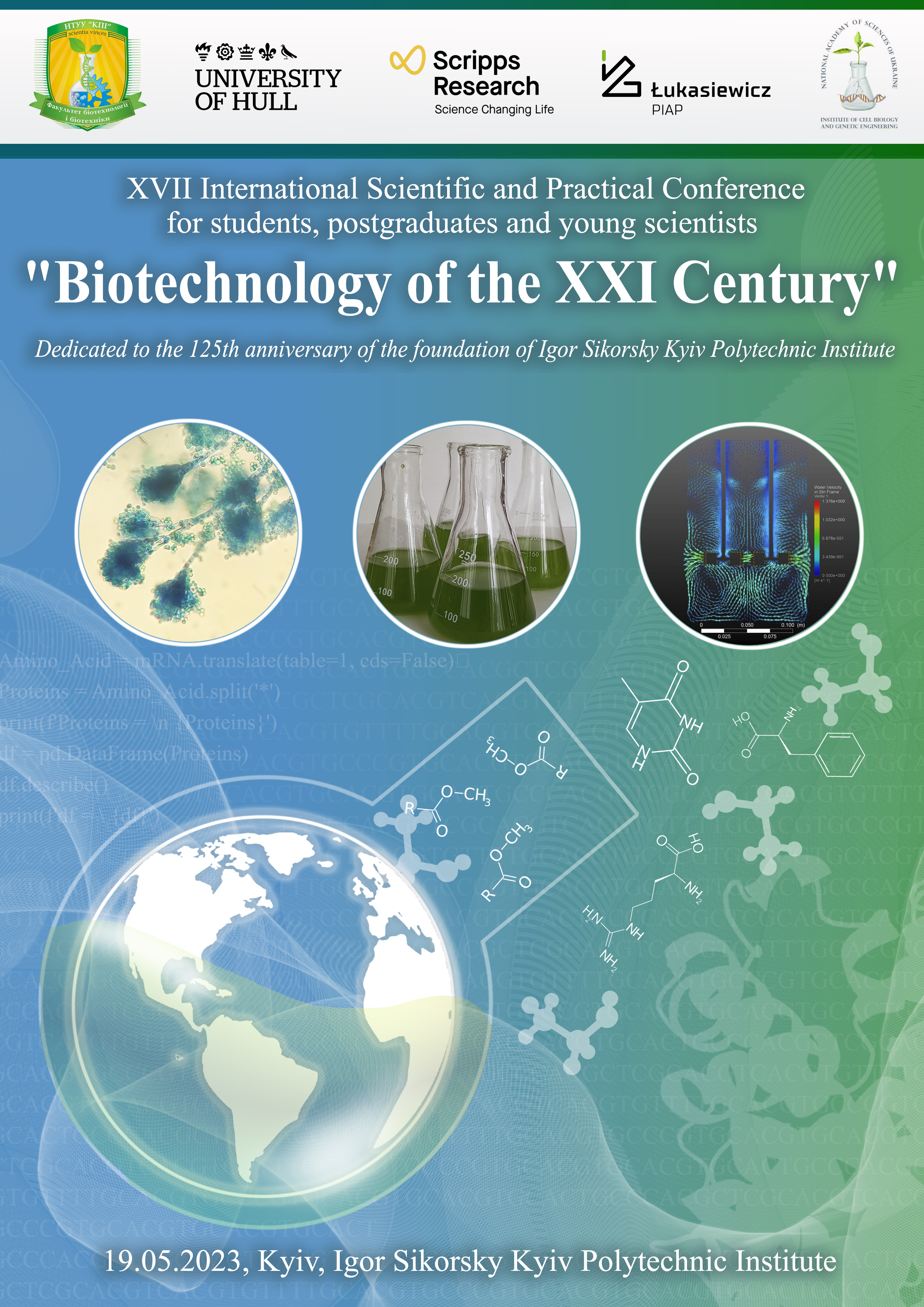A COMPARISON OF Triticum spelta GENOTYPES USING SSR GENOTYPING
Анотація
The development of the theory and practice of improving agricultural plants is related to expanding the gene pool of cultivated plants at the expense of foreign genetic material. Triticum spelta L. is used as a donor of valuable economic traits in crossing with bread wheat. Compared to durum wheat, spelt is characterized by a lower insoluble content of polymeric proteins, but a higher content of gliadins and soluble polymeric proteins, due to which it has a softer and less elastic gluten. T. spelta varieties also differ in the individual essential amino acids content, containing a number of micro- and macroelements, unsaturated fatty acids and other useful substances. In addition, spelt’s flour has unique taste qualities and high content of vitamins of group B and is also suitable for the best quality confectionery products production. However, the spread of this culture is hindered by its low yield and a number of morphological characteristics that lower production.
Посилання
Goncharov N.P.; Kondratenko E.Ya. Origin, domestication and evolution of wheat // Vestnik VOGyS. – 2008. – 12, No. ½ – P. 159-179.
Drobot V.I., Semenova A.B., Mykhonik L.A. Comparative characteristics of the chemical composition and technological properties of whole wheat flour and spelled flour // Storage and Processing of Grain. – 2014. – No. 4. – P. 37-39.
Zvedenyuk T. Polba – grain from the stone age // Grain: Monthly journal of the modern agroindustrialist. - 2013. - No. 7. - P. 82-90.
Jorgensen J.R., Olsen C.C. Yield and quality assessment of spelt (Triticum spelta L.) compared with winter wheat (Triticum aestivum L.) in Denmark // Spelt and Quina. – Working Group Meeting (24–25 Oct. 1997). – Wageningen, the Netherlands, 1997. – P. 33–38.
Eltun R., Aasven M. The possibilities for spelt cultivation in Norway // Spelt and Quina. – Working Group Meeting (24–25 Oct. 1997). – Wageningen, the Netherlands, 1997. – P. 7–13.
Dahlstedt L. Spelt Wheat (Triticum aestivum ssp. spelta (L.) An alternative crop for ecological farming systems // Spelt and Quina. – Working Group Meeting (24–25 Oct. 1997). – Wageningen, the Netherlands, 1997. – P. 3–6.
Sichkar S.M., Velikozhon L.G., Dubrovna O.V. Analysis of Glu1 loci in hybrids Triticum spelta L. × Triticum aestivum L. Factors of Experimental Evolution of Organisms. - 2017. - Vol. 21. - P. 187-192.
Shelepov V.V., Havrilyuk N.N., Vergunov V.A. Wheat: biology, morphology, selection, seed production. - K.: Logos, 2013. - 498 p.
Lakhneko O.R., Velikozhon L.G., Sichkar S.M., Stepanenko A.I., Morgun B.V. Comparative evaluation of the genotypes of Triticum spelta and T. aestivum using microsatellite markers // Collection of materials of the International scientific and practical conference "Modern directions of breeding improvement of wheat", dedicated to the 100th anniversary of wheat breeding at the NCSSVR - Breeding and Genetics Institute, Odesa, June 1-3, 2016. - pp. 93-94.
Murray M. G., Thompson W.F. Rapid isolation of high molecular weight plant DNA // Nucl, Acids Res. - 1980, - 8(19). - P. 4321-4325.
Roder MS et al. (1998) A microsatellite map of wheat Genetics 149:2007-2023.
Brody J. Ker S.. History and principles of History and principles of conductive media for standard DNA electrophoresis // Anal.: Biochem. - 2004. - 333. - P. 1-13.

